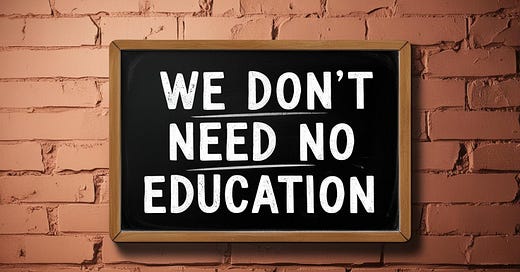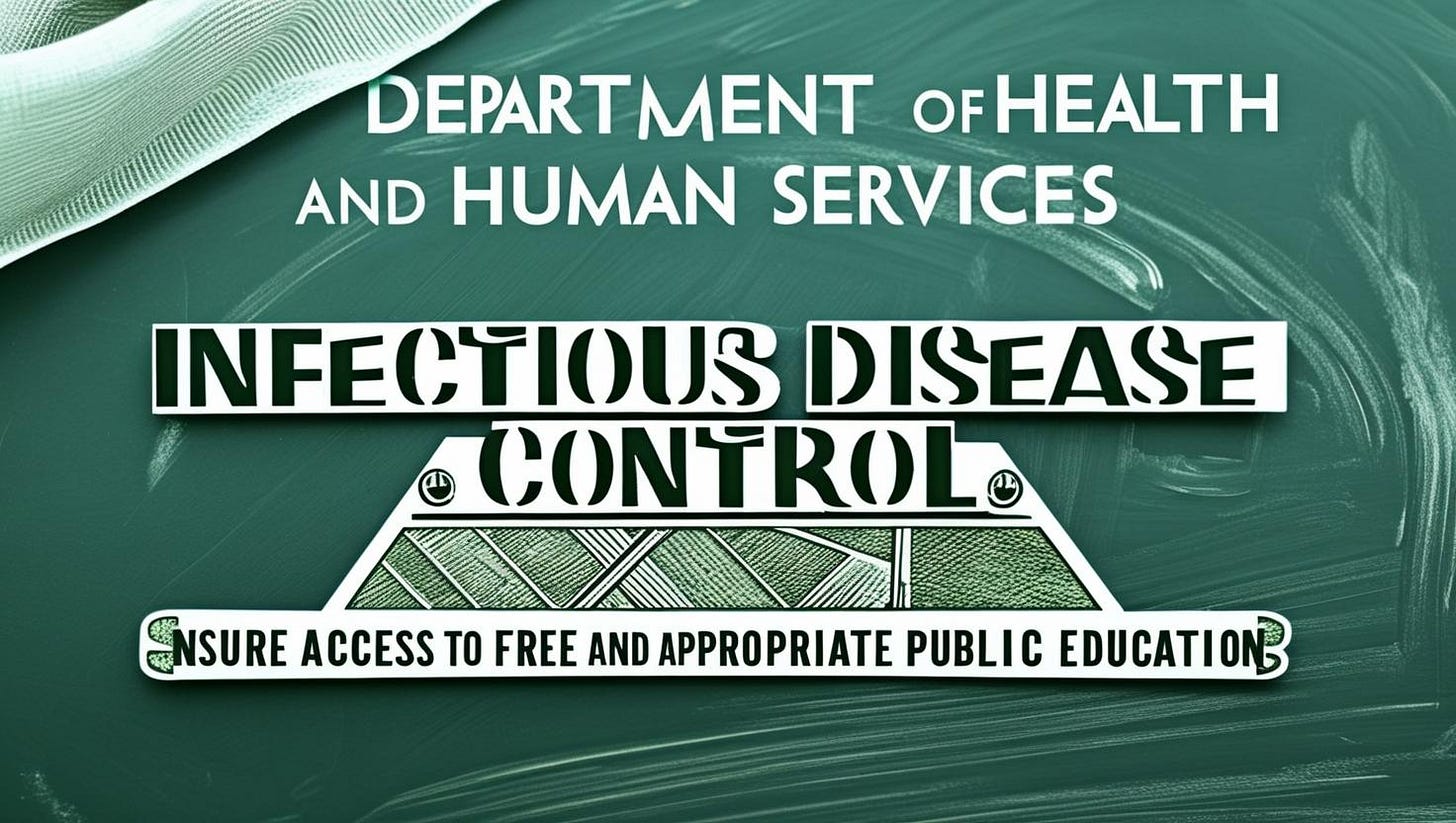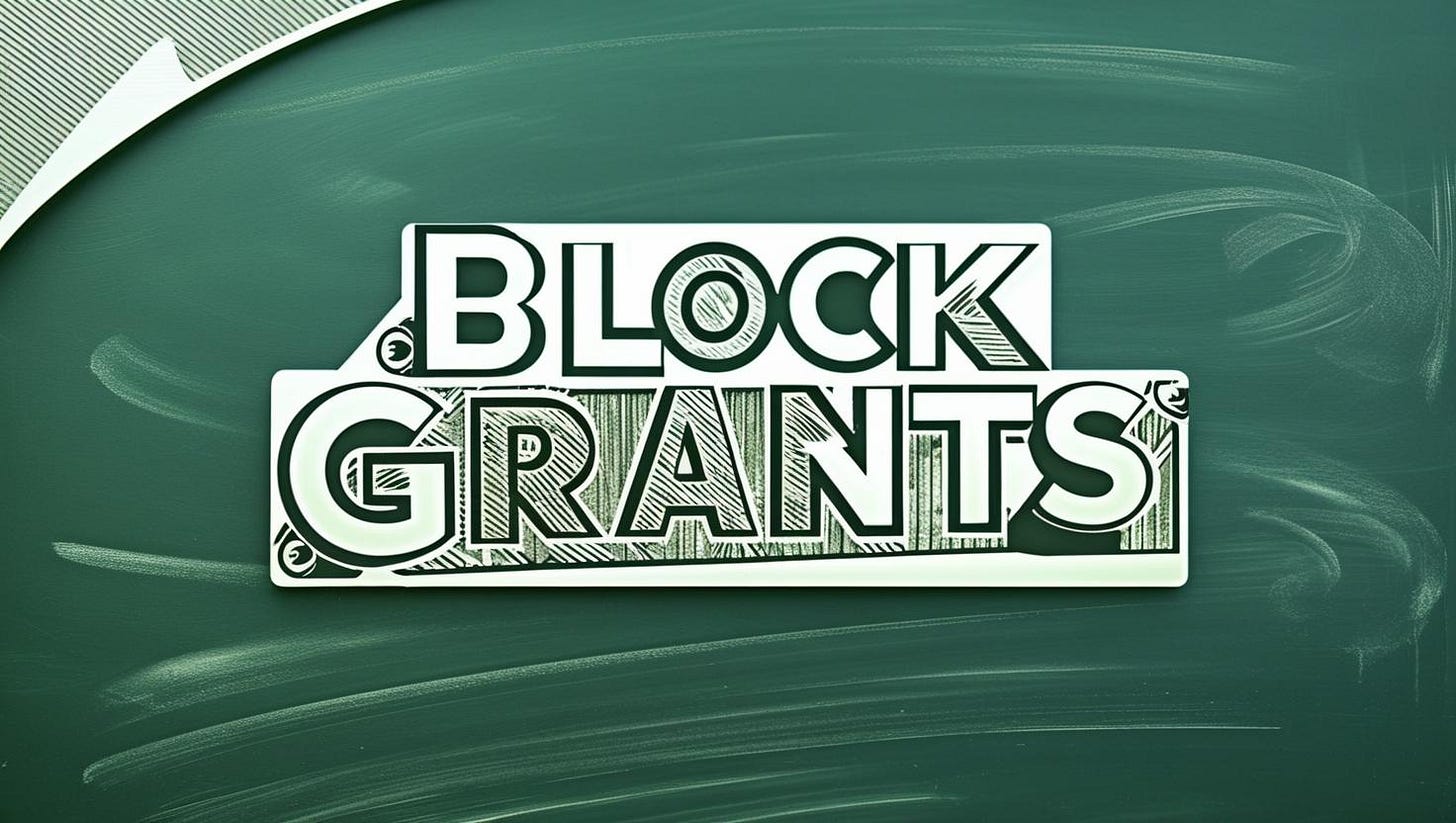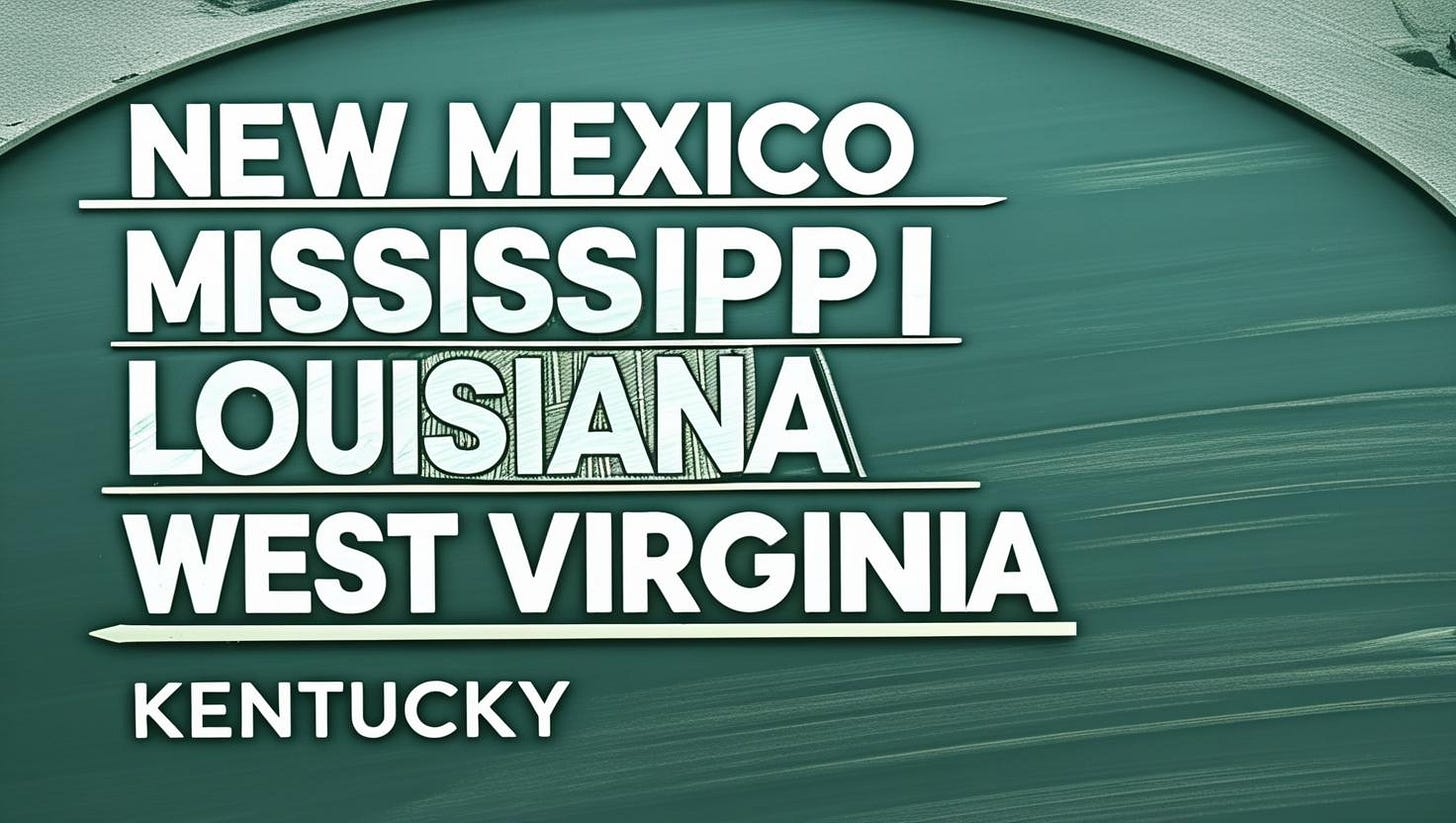❗ The Big News: The Department of Education Is Being Dismantled
On March 20, 2025, President Trump signed an executive order initiating the dismantling of the U.S. Department of Education (DOE). This aligns directly with Project 2025, a comprehensive conservative initiative to restructure the federal government.
Key goals include:
Transferring special education oversight to the Department of Health and Human Services (HHS).
Expanding voucher programs to redirect public funding toward private schools.
Replacing federal education funding with block grants, giving states more control with fewer regulations.
🧾 Can the President fully eliminate the DOE?
Not without Congressional approval. President Trump currently lacks sufficient votes in the Senate for legislative action.
However, through executive orders, the administration is implementing "functional dismantling":
✅ Reducing DOE staff and funding.
✅ Transferring major programs, like special education and student loans, to other departments.
✅ Weakening enforcement of civil rights protections such as IDEA and Section 504.
✅ Eliminating or defunding oversight offices.
📢 Bottom line: Although the DOE formally remains, its authority is rapidly diminishing, significantly impacting students with disabilities.
Let’s break down what’s happening—and why it matters so much for neurodivergent kids.
Moving Disability Oversight to HHS Sends the Wrong Message
The movement for inclusive education is one of the most important civil rights victories in U.S. history. Before 1975, millions of disabled children were excluded from school altogether or placed in segregated, underfunded programs.
The passage of the Individuals with Disabilities Education Act (IDEA) changed that—by establishing that:
Disability is not just a medical issue. It’s an educational and civil rights issue.
The plan to shift special education oversight from the Department of Education to the Department of Health and Human Services (HHS) is a step backwards.
HHS is not an education agency. It doesn’t train teachers, fund inclusive classrooms, or enforce IDEA.
This move reframes disability as something to cure, not something to accommodate—and that undermines the inclusion of disabled students in public schools.
It sends a symbolic and practical message: that disabled students belong in medical systems, not educational ones.
📢 Bottom line: Transferring special education oversight to HHS undermines decades of civil rights progress—and weakens the idea that disabled students have a right to be included in public education.
2. Voucher Programs Leave Disabled Kids Behind
Vouchers are often framed as "parental choice." But in practice, they can strip away key protections for students with disabilities.
Here’s the problem:
Public schools must follow federal disability laws:
IDEA (Individuals with Disabilities Education Act)
Section 504 of the Rehabilitation Act
The Americans with Disabilities Act (ADA)
These laws guarantee access to IEPs, accommodations, inclusion, and legal recourse if schools don’t comply.
Private schools—even those accepting public vouchers—are usually not bound by IDEA.
Most are only partially covered by the ADA or Section 504, and those that take voucher students are often not required to provide the same level of services or follow the same due process procedures.Once a family accepts a voucher, they may lose key rights—including the ability to demand services through IDEA.
📌 And most families are never clearly told this. That’s the informed consent paradox: parents think they’re gaining choices—but may be giving up rights they didn’t know they had.
Private schools can also:
Deny admission based on disability
Expel students if behavioral or academic challenges arise
Limit supports to what they already offer—regardless of a student’s legal entitlements in public school
And there’s often no clear complaint process or way to appeal if a student is mistreated or denied services.
📢 Bottom line: Vouchers shift public money into schools that aren’t required to serve everyone—and students with disabilities often pay the price.
3. Block Grants = Less Money for the Kids Who Need the Most
Federal special education funding isn’t perfect, but it is specifically intended to support students with disabilities and comes with legal protections.
States receive funds based on a formula that accounts for total enrollment and poverty levels. While the amount doesn’t fully adjust to every change in need, it must be spent on special education services, with reporting and accountability requirements.
Block grants are different. They give states a fixed amount of money with fewer rules, regardless of how many students need support or how needs evolve. States can choose how to spend the funds, and there’s no guarantee that any of it will go toward disability services.
Why That Fails:
Special education needs aren’t fixed—more students are diagnosed, costs rise, and service intensity varies
Block grants don’t adjust for inflation, changing populations, or more complex support needs
But services still must be provided—so when the money runs short; states often cut corners:
Fewer service hours
Tighter eligibility rules
Fewer specialists or aides
Delayed evaluations and tech access
And because the money isn’t earmarked, special education competes with every other budget line, such as building maintenance, school security, or tech upgrades.
States with fewer resources—especially rural, Southern, and low-income areas—will feel the impact first.
📢 Bottom line: Block grants remain the same, even when student needs grow. When money gets tight, children with disabilities are often the first to lose support.
4. Without the Department of Education, Who’s Left to Enforce the Rules?
IEPs and 504 Plans don’t enforce themselves. And when schools ignore them—which they often do—families need more than just persistence.
They need enforcement.
That’s where the U.S. Department of Education plays a critical role—through both the Office for Civil Rights (OCR) and the Office of Special Education Programs (OSEP).
These offices are responsible for:
Investigating civil rights violations in public schools
Enforcing Section 504 of the Rehabilitation Act (disability rights) and Title II of the ADA
Overseeing compliance with IDEA, including monitoring state education agencies and supporting systemic improvement
Providing a pathway for families to file complaints when schools fail to deliver required services
But Project 2025 proposes gutting or eliminating this enforcement structure.
That would mean:
No federal backstop when schools deny IEP services or fail to accommodate
No meaningful accountability for disability-based discrimination
No independent investigations when local and state systems fall short
Without these offices, families would face the full weight of a school district—with no neutral oversight, no enforcement leverage, and no accessible recourse.
And most families don’t have the legal knowledge, resources, or time to take on that fight alone.
📢 Bottom line: Rights are only as strong as the systems that enforce them. Without the Department of Education’s civil rights enforcement, students with disabilities—and their families—are left to fend for themselves.
🗺️ Why States Can’t Be Left to Decide Alone
The Individuals with Disabilities Education Act (IDEA) was passed in 1975 to address a clear and ongoing crisis: widespread state-level exclusion of children with disabilities from public education.
Before IDEA:
Many states refused to admit disabled children to public schools
Others placed them in segregated, underfunded, or non-academic programs
Some states offered no services at all for certain disability categories
IDEA was designed to fix this—by establishing federal standards and enforcement mechanisms to protect the educational rights of disabled students in every state.
That structure reflects a hard truth:
Without federal oversight, many states had already proven they would not guarantee access or equity for disabled children.
And even today, access varies dramatically across the country:
States with stronger economies and advocacy communities tend to offer more robust services
States with fewer resources—especially rural or low-income areas—often provide less, and may cut services first during budget shortfalls
📢 Bottom line: A child’s access to education should not depend on their ZIP code. That’s why federal protections matter—and why they must be enforced.
❤️ Who Will Be Hurt the Most?
These changes won’t affect everyone equally. They’ll hit hardest for:
Kids with complex or multiple disabilities who need layered support (like those with ADHD and autism, or learning disabilities and mental health conditions)
Children in low-income families or rural communities who rely on federally funded services that their states may not replace
Black, brown, and Indigenous students who already face disproportionate discipline, fewer resources, and systemic barriers to access
English Language Learners (ELLs) who risk losing tailored support and language-access protections under federal law
LGBTQ+ students, especially transgender youth, who depend on Title IX protections that are enforced by the DOE
Immigrant and undocumented students who may face exclusion without federal civil rights enforcement
Students in foster care or housing insecurity, who rely on DOE protections for school stability and access
Families without time, money, advocacy support, or legal knowledge to navigate a decentralized, deregulated system on their own
📢 These are the students who most need federal protections—and stand to lose the most if those protections disappear.
Without strong oversight, equity becomes optional. And the children most likely to be marginalized will be the first to be forgotten.
🗣️ What You Can Do
You don’t need to be a policy expert to make a difference. Here’s where to start:
✅ Share this newsletter with your community—parents, educators, therapists, allies
✅ Call your senators and representatives—demand full funding for IDEA and the Department of Education
✅ Support disability-led advocacy organizations
✅ Speak up locally—at school board meetings, PTA events, or community forums
✅ Challenge the “school choice” narrative—ask who’s being left behind
✨ Final Thoughts
This isn’t just about politics—it’s about people.
It’s about real children, in real classrooms, who depend on systems that were created to protect them.
It doesn’t matter who their parents voted for.
Dismantling the Department of Education the way we are doesn’t just threaten one agency. It threatens the entire framework of disability rights in public education.
📢 We cannot afford to be quiet.
Our kids deserve more than survival. They deserve equity, dignity, and inclusion.
Let’s make sure we fight for systems that make that possible.
I’m Kristen McClure, MSW, LCSW—a therapist with 30 years of experience, a child and mental health advocate, and a neurodivergent-affirming coach. I run a therapy practice in Charlotte, NC, and have developed a comprehensive, neurodivergent-affirming program for ADHD and AuDHD women.
🔹 Learn more about the Flourish program: here
🔹 Join the waitlist for the next Flourish cohort: here
🔹 Join my free, affirming community for neurodivergent women: here
🔹 Are you a therapist and want to learn about the flourish model? I’m considering teaching this model and sharing the materials. sign up here
I also write four free newsletters on Substack, covering ADHD advocacy, neurodivergent children, and therapist topics.
Thanks for reading the ADHD advocate.











Excellent points! The saddest part is there are teachers cheering this on 💔😪